|

HOME |
ABOUT | INDEX |
NEWS |
FACEBOOK |
CONTACT
SYMBOLS
Flags | Insignia | Emblems | Logos | Icons
LGBTQ Pride Symbols and
Icons
Gay,
lesbian, bisexual, transgender, and queer groups over
the years have used a variety of symbols to demonstrate
solidarity and unity for a common cause and to
graphically represent their shared vision. LGBTQ
advocates and activists have adopted various emblems,
logos, insignia, flags, and colors, to express their
sense of pride.
Worn on
lapels, emblazoned on banners, or printed on t-shirts,
these symbols are a way for LGBTQ people to signal each
other and to announce to the world that they are queer
and they are here. Whether protesting or celebrating,
these emblems of pride represent the ideals, struggles,
beliefs, and accomplishments of the LGBTQ community.
The queer
brand includes iconic symbols that are universal for the
entire community. And it also includes special symbols
to help identify specific groups or subcultures within
the highly diverse queer population.
Rainbow Flag

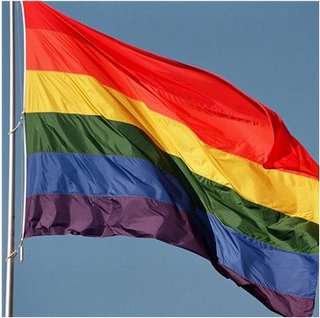
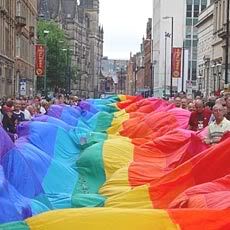
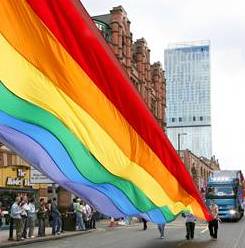
Wikipedia: LGBTQ Pride Symbols
Short History of the Rainbow Pride Flag
Stonewall Society: Gay Symbols
Advocate: Complete Guide to Queer Pride Flags
Wikipedia: Gay Pride
Queer Pride Flags You Should Know
Info: LGBTQ History
Introduction to LGBTQ Flags
Queer Pride Flags You Should Know
30 Different Pride Flags
on Display
Fun With Flags
The rainbow flag has become the most popular and most
easily-recognizable symbol of the LGBTQ community.
The six consecutive colors of the rainbow are the colors
of pride for the LGBTQ community and can be seen
emblazoned on flags, signs, buttons, banners, and a
range of objects. Use of the rainbow flag by the LGBTQ
community began in 1978 when it first appeared in the
San Francisco Gay and Lesbian Freedom Day Parade.
Gilbert
Baker (1951-2017) was an American artist, gay rights
activist, and designer of the rainbow flag (1978).
Baker's flag became widely associated with LGBTQ rights
causes, a symbol of gay pride that has become ubiquitous
in the decades since its debut. In 2015, the Museum of
Modern Art ranked the rainbow flag as an internationally
recognized symbol as important as the recycling symbol.
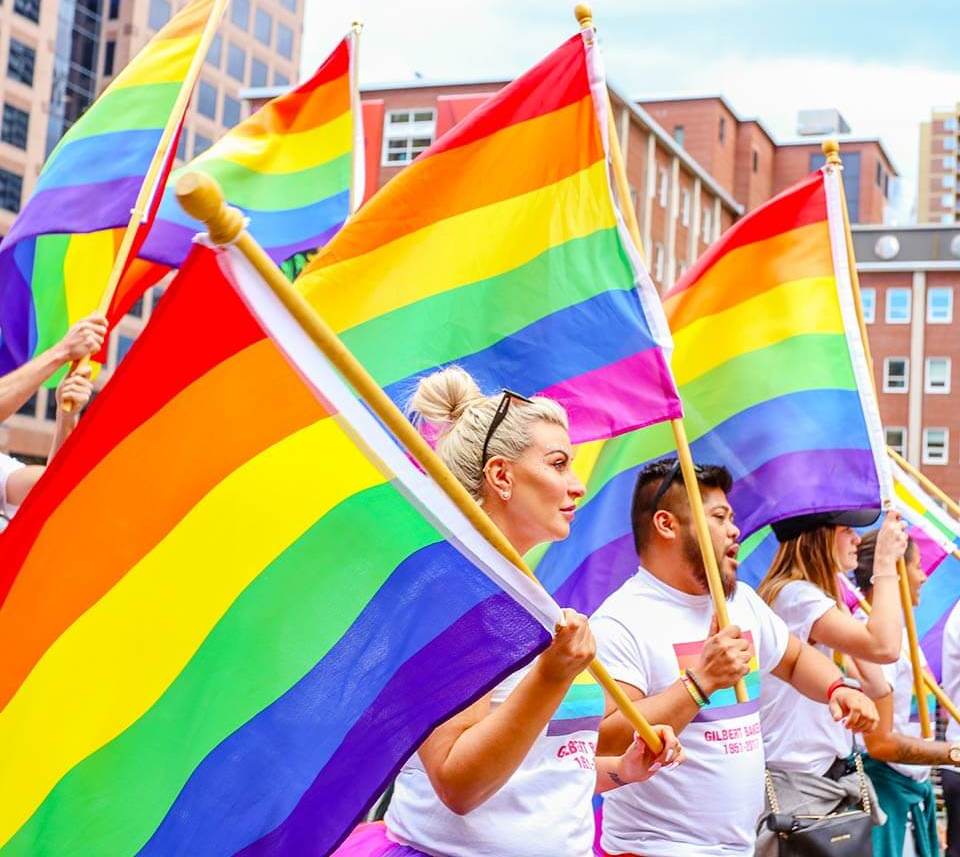
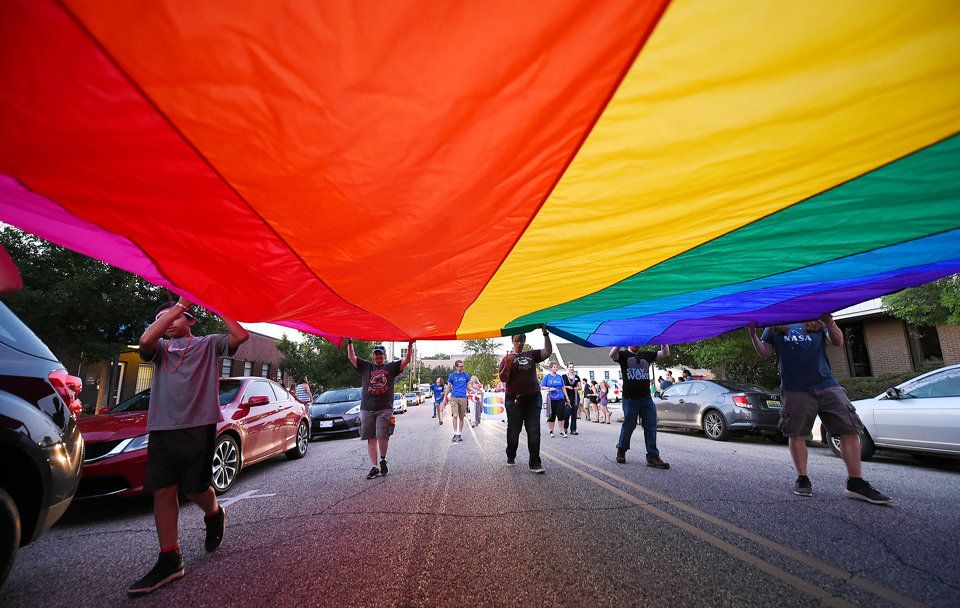
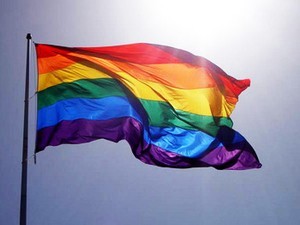
The colors
on the Rainbow Flag reflect the diversity of the LGBTQ
community. When Baker raised the first rainbow flags at
San Francisco Pride on June 25, 1978, it was originally comprised
of eight symbolic colors: Hot Pink (Sex), Red (Life ),
Orange (Healing), Yellow (Sunlight), Green (Nature),
Turquoise (Magic/Art), Indigo (Serenity), Violet
(Spirit).
The use of the rainbow flag as a visible symbol of LGBTQ
unity and pride is also bound up in the creation of the
Gay Pride parades. The original eight-color design by
Gay activist Gilbert Baker has since been simplified to
six colors, but the original 8-color version is still sometimes
used.
Flying with Pride: Colorful Guide to LGBTQ Flags
Gilbert Baker: Creator of the Original Rainbow Flag
How Well Do You Know Your Pride Flags?
Info: Rainbows
Advocate: Pride Flags You Should Know
Info: Pride Parades and Festivals
Gay Star News: Biggest
Guide to LGBTQ Rainbow Flags
Wikipedia: History of Homosexuality
Interview With Gilbert
Baker: Inventor of the Rainbow Flag
Were You Aware of All These LGBTQ Flags?
Rainbow Dept: LGBTQ Pride Symbols
Info: Unicorn
Expansive Rainbow Flags
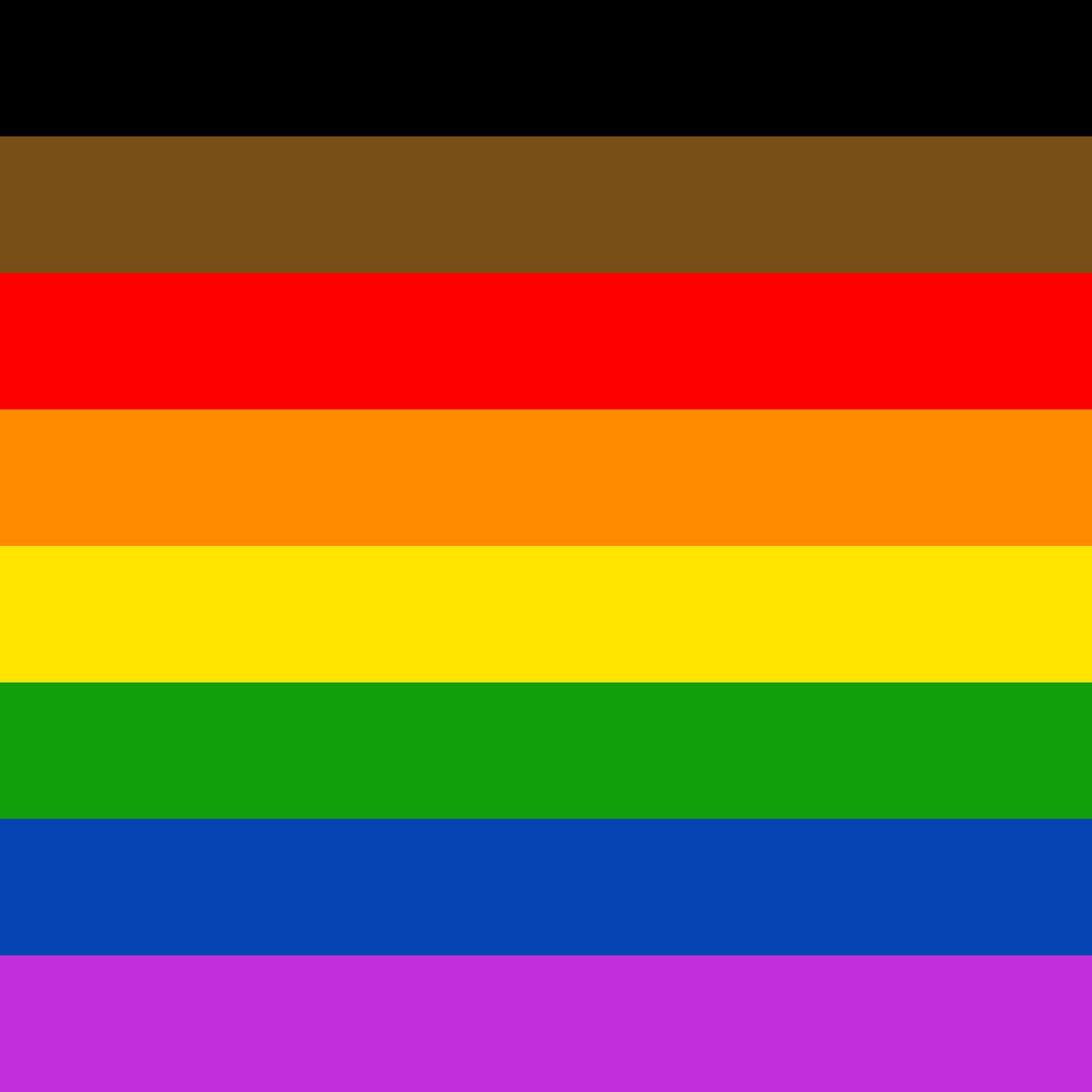
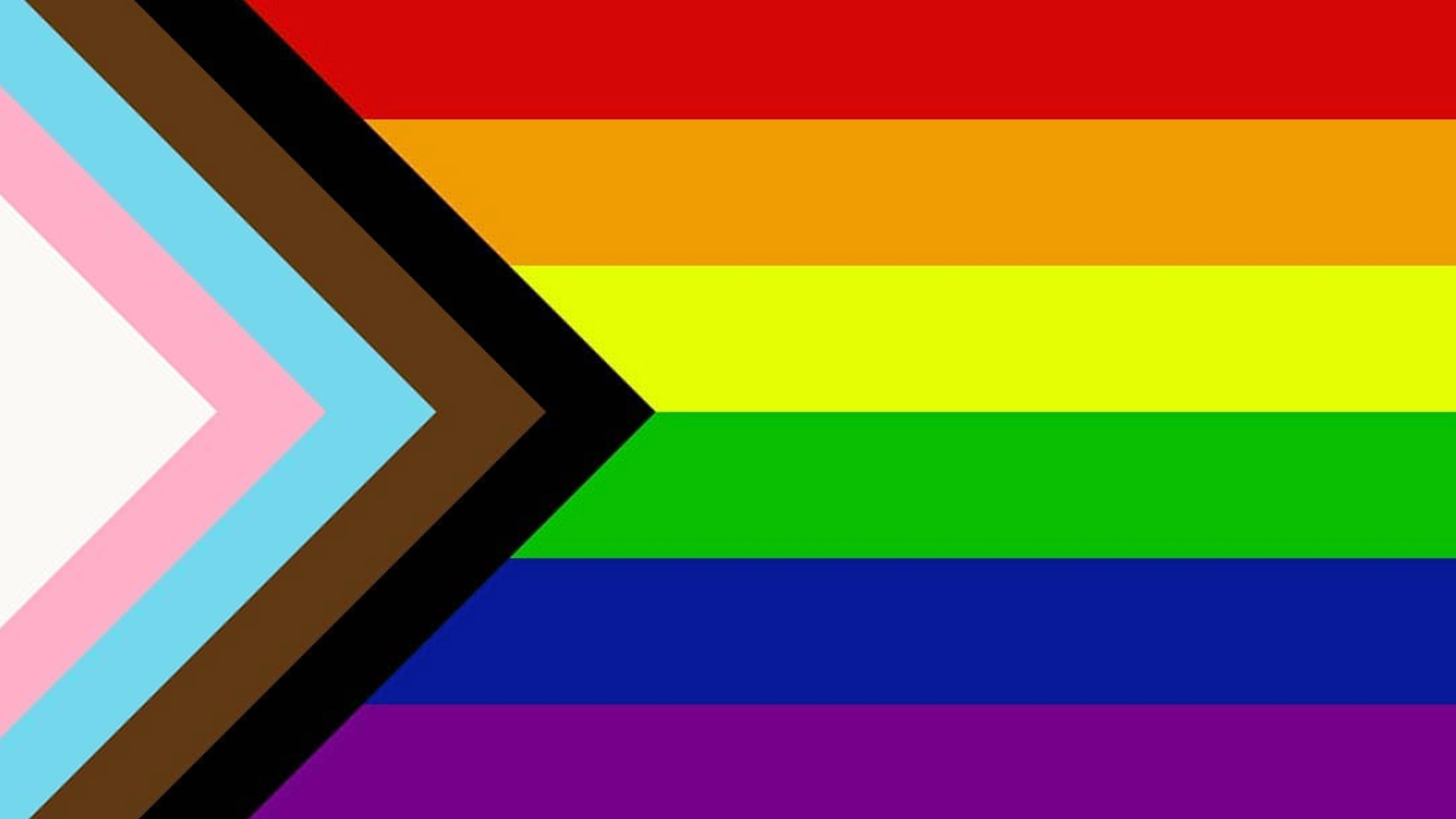
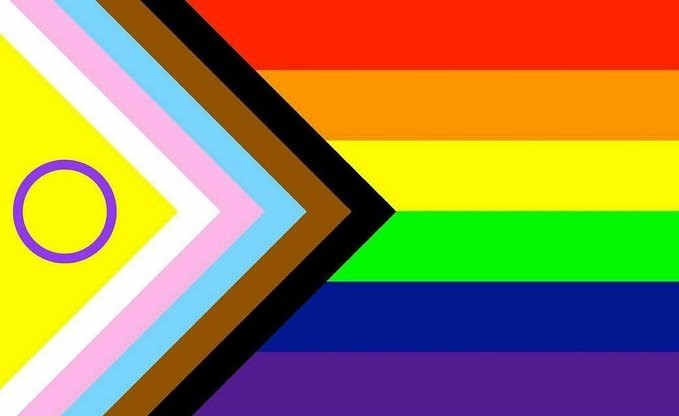
The "inclusive" pride flag on the left incorporates
notions of the diversity of the LGBTQ community by
adding a black and brown stripe to represent QPOC (queer
people of color). The "progress" rainbow flag
in the middle incorporates pink, blue, and white stripes to
represent the transgender community and also
incorporates black and brown stripes to represent the QPOC
community. The flag on the right in a "progress" flag
which includes the intersex symbol.
Short History of the Rainbow Pride Flag
Queer Pride Flags You Should Know
Wikipedia: LGBTQ Pride Symbols
How the Nazi Pink Triangle Became a Defiant Symbol of
LGBTQ Rights
Stonewall Society: Gay Symbols
Introduction to LGBTQ Flags
Queer Code: Secret Languages of LGBTQ
Advocate: Complete Guide to Queer Pride Flags
Interview With Gilbert
Baker: Inventor of the Rainbow Flag
Wikipedia: Gay Pride
30 Different Pride Flags
on Display
How the Nazi Pink Triangle Became a Defiant Symbol of
LGBTQ Rights
HuffPost: Dozens of LGBTQ Pride Flags
Rainbow Flag Color Meanings
Info: LGBTQ History
Symbols of the LGBTQ Movements
Inverted
Triangle
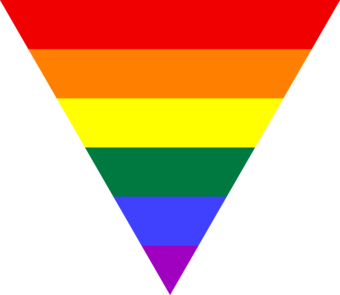 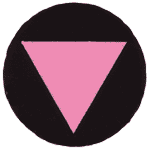 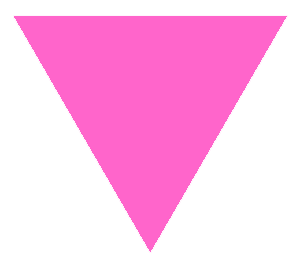 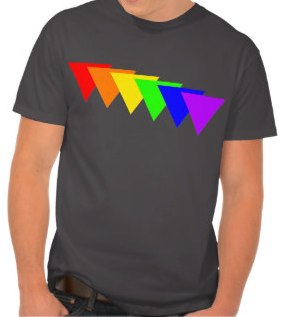

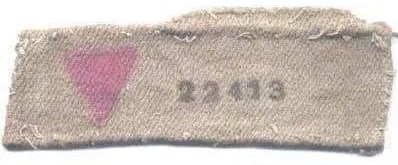
The
inverted pink triangle is easily one of the oldest symbols
for the LGBTQ community. Very popular and
widely-recognized, the pink triangle is rooted in World
War II times, and reminds us of the tragedies of that
era. Although homosexuals were only one of the many
groups targeted for extermination by the Nazi regime, it
is unfortunately the group that history often excludes.
Each prisoner in the concentration camps wore a colored
inverted triangle to designate their reason for
incarceration, and hence the designation also served to
form a sort of social hierarchy among the prisoners. A
green triangle marked its wearer as a regular criminal;
a red triangle denoted a political prisoner. Two yellow
triangles overlapping to form a Star of David designated
a Jewish prisoner. The pink triangle was for
homosexuals.
In the 1970s, gay liberation groups resurrected the pink
triangle as a popular symbol for the gay rights
movement. As the pink triangle is
historically a male symbol, the black triangle has
similarly been reclaimed by lesbians and feminists as a
symbol of pride and solidarity.
Lambda
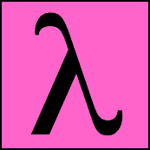
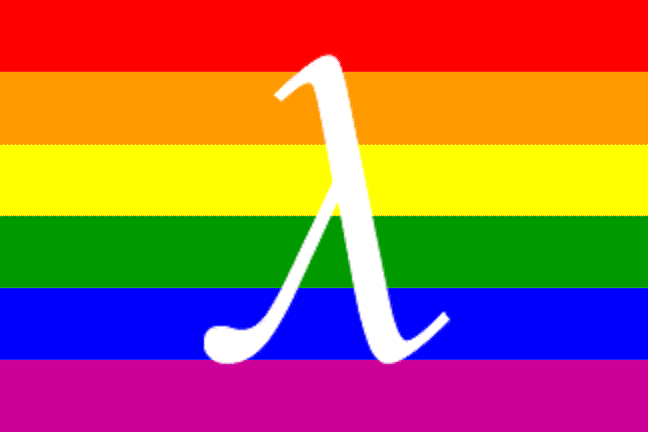
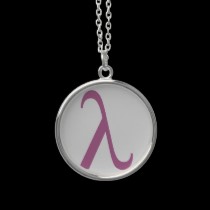
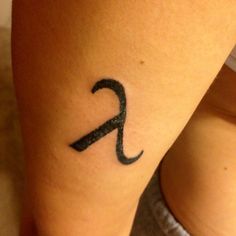
Lambda is the Greek letter "L." It was first
chosen as an LGBTQ symbol when it was adopted in 1970 by
the New York Gay Activists Alliance. It became the
symbol of their growing movement of gay liberation. In
1974, the lambda was subsequently adopted by the
International Gay Rights Congress held in Edinburgh,
Scotland. As their symbol for lesbian and gay rights,
the lambda became internationally popular. No one seems
to have a definitive answer why the lambda was
originally chosen as a gay symbol. Some suggest that
lambda, as the letter "L," stands for liberation (as in
gay liberation movement). Others cite the use of lambda
in physics to denote energy or wavelength.
The ancient Greek Spartans regarded the lambda to mean
unity, while the Romans considered it "the light of
knowledge shed into the darkness of ignorance."
Gilbert Baker: Creator of the Original Rainbow Flag
Info: Rainbows
Queer Pride Flags You Should Know
Advocate: 30 Pride Flags You Should Know
Info: Pride Parades and Festivals
Short History of the Rainbow Pride Flag
How Well Do You Know Your Pride Flags?
Gay Star News: Biggest
Guide to LGBTQ Rainbow Flags
Wikipedia: History of Homosexuality
Fun With Flags
Here's What the Different LGBTQ Flags
Represent
Were You Aware of All These LGBTQ Flags?
Gilbert Baker Memorial
Rainbow Dept: LGBTQ Pride Symbols
Info: Unicorn
Gender Symbols
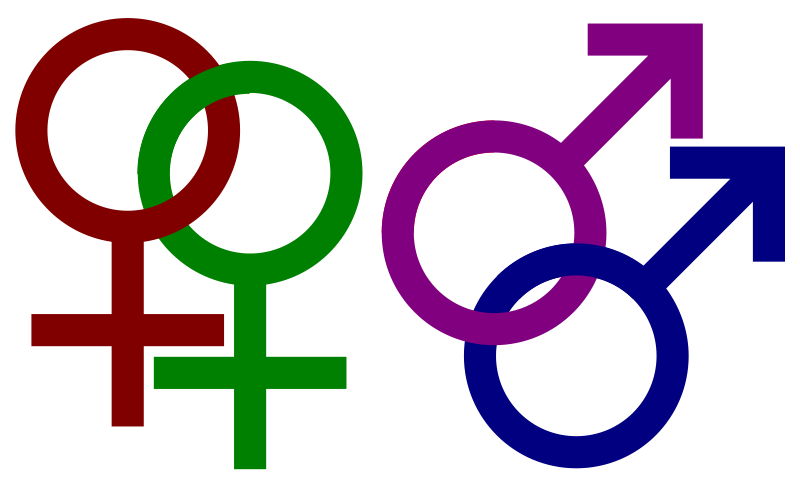
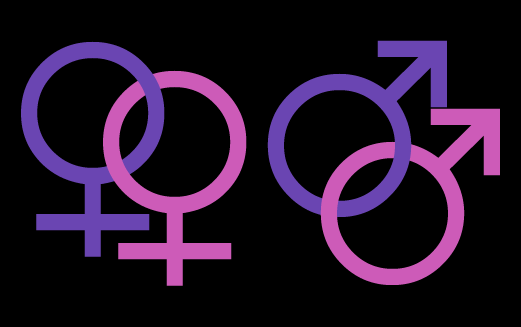
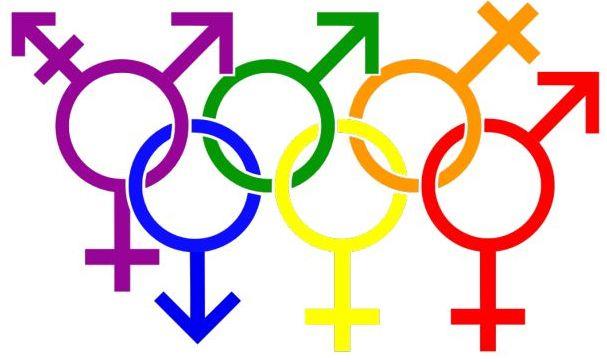
Biological gender symbols are common astrological signs
handed down from ancient Roman times. The pointed Mars
symbol represents the male and the Venus symbol with the
cross represents the female. Double interlocking male
symbols have been used by gay men since the 1970s.
Double interlocking female symbols have often been used
to denote lesbianism, but some feminists have instead
used the double female symbols to represent the
sisterhood of women. These same feminists would use
three interlocking female symbols to denote lesbianism.
Labrys
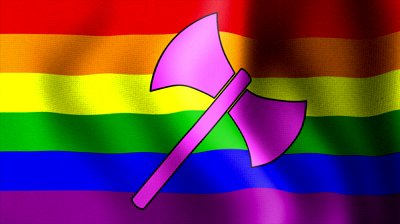
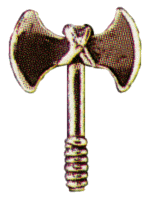
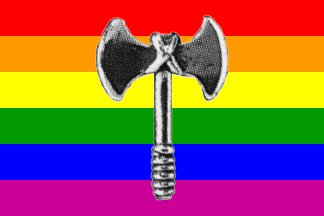
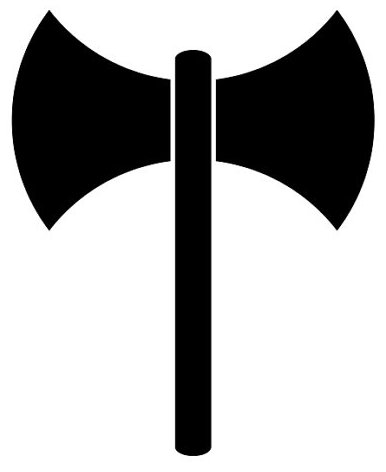
The labrys is a double edged hatchet or axe which was
commonly used by matriarchal societies as both a weapon
and a harvesting tool. Today, the labrys is a lesbian
and feminist symbol of strength and self-sufficiency.
Lesbians continue to use it as a common symbol of pride.
The labrys also played a part in ancient Mythology.
Demeter, the goddess of the earth, used a labrys as her
scepter and religious ceremonies in her honor (as well
as in honor of Hecate, the goddess of the underworld)
are believed to included lesbian sex.
Equal Sign

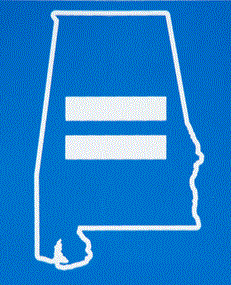
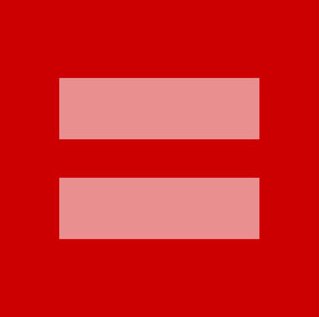
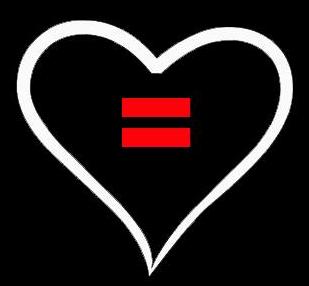
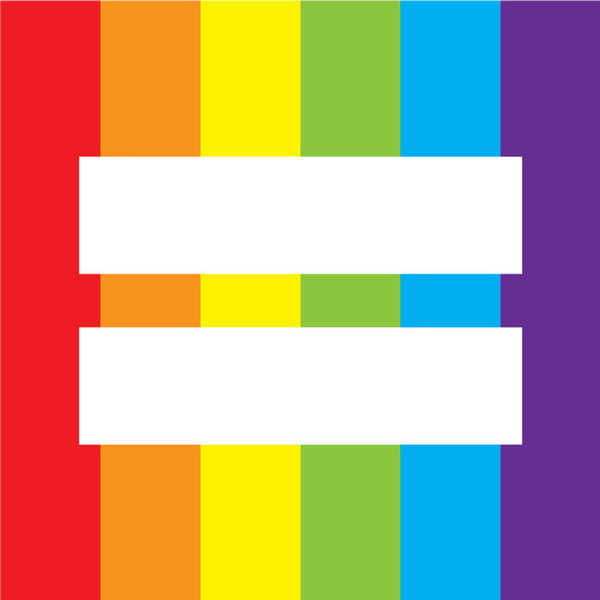
The Human Rights Campaign (HRC)
is one of the most prominent national LGBTQ rights
organizations. Its logo consists of a blue square with a
yellow equal sign. Many LGBTQ activist or interest
groups incorporate an equal sign (equality) in their
logo. The red and pink Marriage Equality (same-sex
marriage) symbol is another good example.
Wikipedia: LGBTQ Pride Symbols
Short History of the Rainbow Pride Flag
Stonewall Society: Gay Symbols
Advocate: Complete Guide to Queer Pride Flags
Wikipedia: Gay Pride
Queer Pride Flags You Should Know
Info: LGBTQ History
Introduction to LGBTQ Flags
Queer Pride Flags You Should Know
30 Different Pride Flags
on Display
Fun With Flags
Queer Community
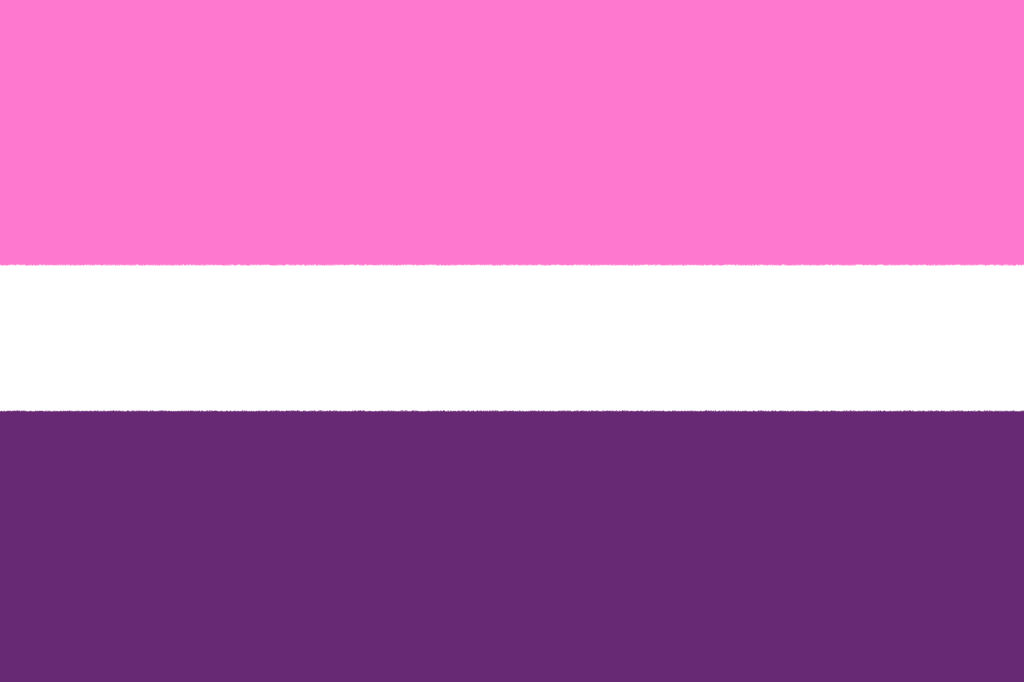
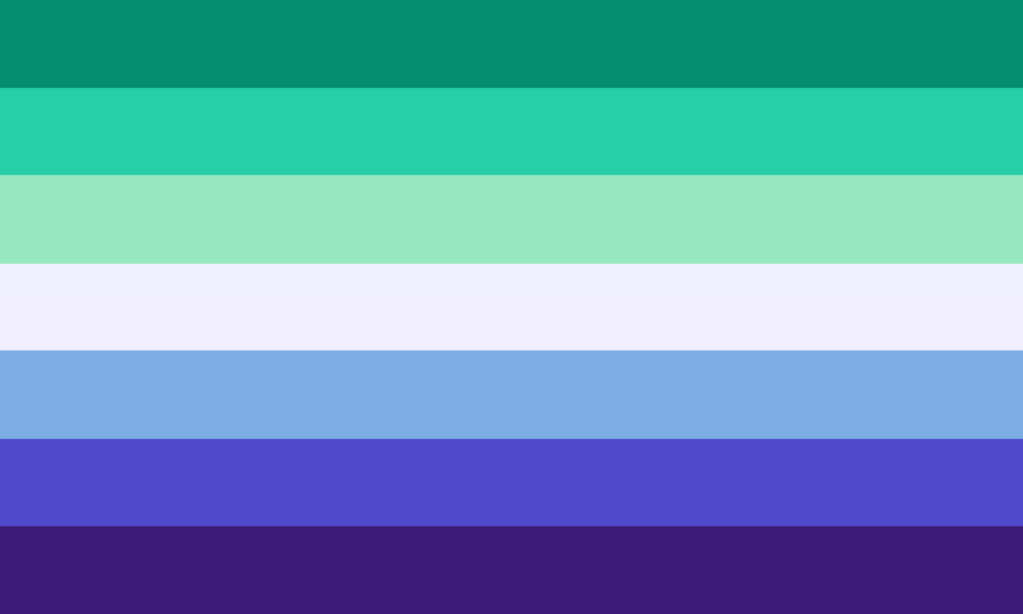
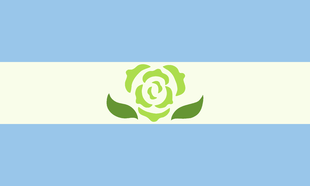
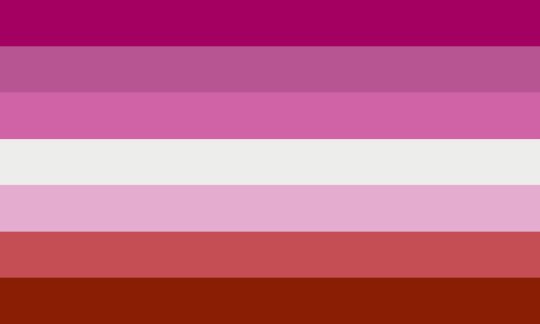
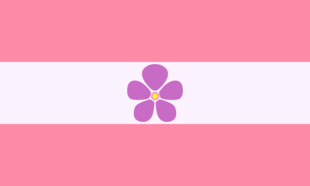
Short History of the Rainbow Pride Flag
Wikipedia: LGBTQ Pride Symbols
Stonewall Society: Gay Symbols
Advocate: Complete Guide to Queer Pride Flags
Here's What the Different LGBTQ Flags
Represent
Wikipedia: Gay Pride
HuffPost: Dozens of LGBTQ Pride Flags
Info: LGBTQ History
Symbols of the LGBTQ Movements
Gilbert Baker: Creator of the Original Rainbow Flag
Info: Rainbows
LGBTQ Subgroup
Flags
LGBTQ
pride flags serve as powerful symbols of visibility,
inclusion, and solidarity within the LGBTQ community.
Each flag represents the diverse identities,
experiences, and struggles faced by individuals who fall
under the LGBTQ umbrella. The importance of these flags
lies in their ability to communicate messages of pride,
empowerment, and equality while also fostering a sense
of belonging and community.
Beyond the rainbow flag, there are several other pride
flags that represent specific groups within the LGBTQ
community. For example, the transgender pride flag,
designed by transgender activist Monica Helms in 1999,
uses blue, pink, and white stripes to reflect the gender
identity spectrum of the transgender community.
Similarly, the bisexual pride flag, with its pink,
purple, and blue stripes, symbolizes the experiences and
visibility of bisexual individuals. Each of these flags
helps to raise awareness and promote understanding of
the unique challenges faced by various subgroups within
the LGBTQ community.
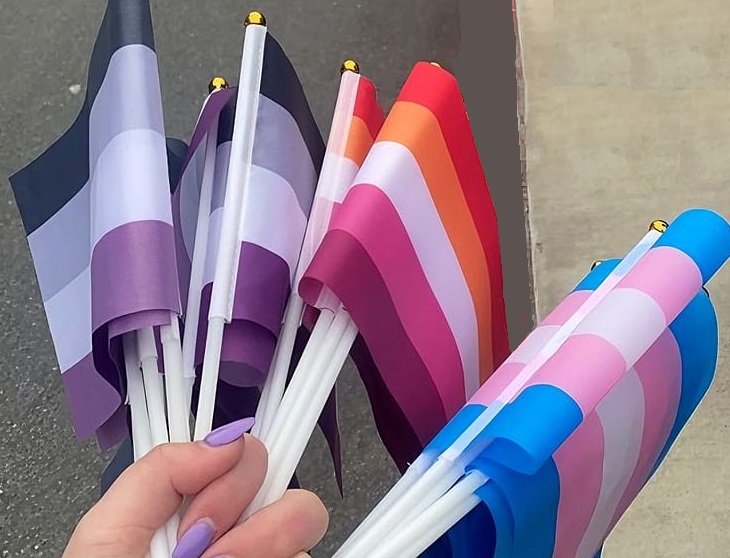
These flags also play a crucial role in advocacy and
activism. They are often seen at pride parades,
protests, and events, where they signal unity and demand
for equality. The display of pride flags challenges
societal norms, asserts the rights of LGBTQ individuals,
and affirms their dignity and worth. For many people,
seeing the flags—whether in public spaces or online—can
offer a sense of safety and encouragement, signaling
that acceptance is possible, even in a world that has
historically marginalized LGBTQ people.
The various LGBTQ pride flags are vital for their
representation, advocacy, and empowerment. They offer a
visual affirmation of identity and belonging, celebrate
the rich diversity of the LGBTQ community, and continue
to be important tools in the ongoing fight for equality
and social justice.
Queer Pride Flags You Should Know
Wikipedia: LGBTQ Pride Symbols
30 Different Pride Flags
on Display
Stonewall Society: Gay Symbols
Advocate: Complete Guide to Queer Pride Flags
Wikipedia: Gay Pride
Queer Pride Flags You Should Know
HuffPost: Dozens of LGBTQ Pride Flags
Gay Star News: Biggest
Guide to LGBTQ Rainbow Flags
Introduction to LGBTQ Flags
Info: LGBTQ History
Bisexual

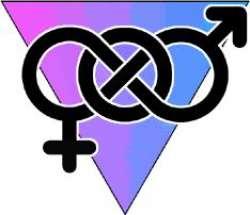 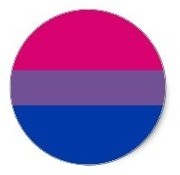 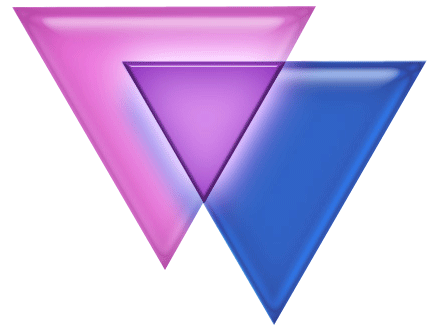
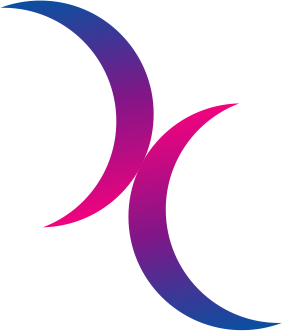
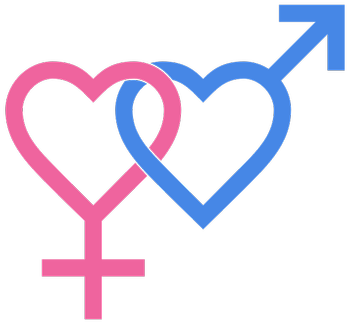
The flag consists of a broad magenta stripe
at the top (representing same-gender attraction), a
broad stripe in blue at the bottom (representing
opposite-gender attraction), and a narrower deep
lavender band occupying the central fifth (which
represents attraction towards both genders).
The blue and pink overlapping triangle symbol represents
bisexuality and bi pride. The exact origin of this
symbol, sometimes facetiously referred to as the "biangles",
remains ambiguous. It is thought that the pink triangle
represents homosexuality, as it does when it stands
alone, while the blue stands for heterosexuality. The
two together form the color lavender, a blend of both
sexual orientations and a color that has been associated
with homosexuality for almost a century. It's possible
that the pink may represent attraction to females, the
blue attraction to males, and lavender attraction to
both. The bisexual moon symbol is sometimes used.
Symbols of the LGBTQ Movements
Gilbert Baker: Creator of the Original Rainbow Flag
Info: Rainbows
Advocate: 30 Pride Flags You Should Know
Info: Pride Parades and Festivals
Interview With Gilbert
Baker: Inventor of the Rainbow Flag
Wikipedia: History of Homosexuality
Queer Pride Flags You Should Know
Queer Code: Secret Languages of LGBTQ
Were You Aware of All These LGBTQ Flags?
Rainbow Dept: LGBTQ Pride Symbols
Info: Unicorn
Wikipedia: LGBTQ Pride Symbols
Stonewall Society: Gay Symbols
Advocate: Complete Guide to Queer Pride Flags
Wikipedia: Gay Pride
How Well Do You Know Your Pride Flags?
Flying with Pride: Colorful Guide to LGBTQ Flags
Here's What the Different LGBTQ Flags
Represent
HuffPost: Dozens of LGBTQ Pride Flags
Info: LGBTQ History
Queer Code: Secret Languages of LGBTQ
Symbols of the LGBTQ Movements
Asexual
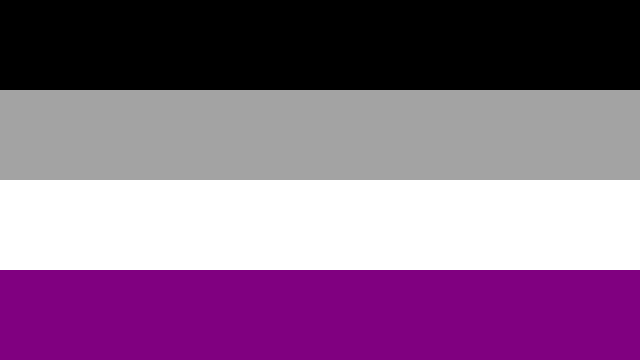
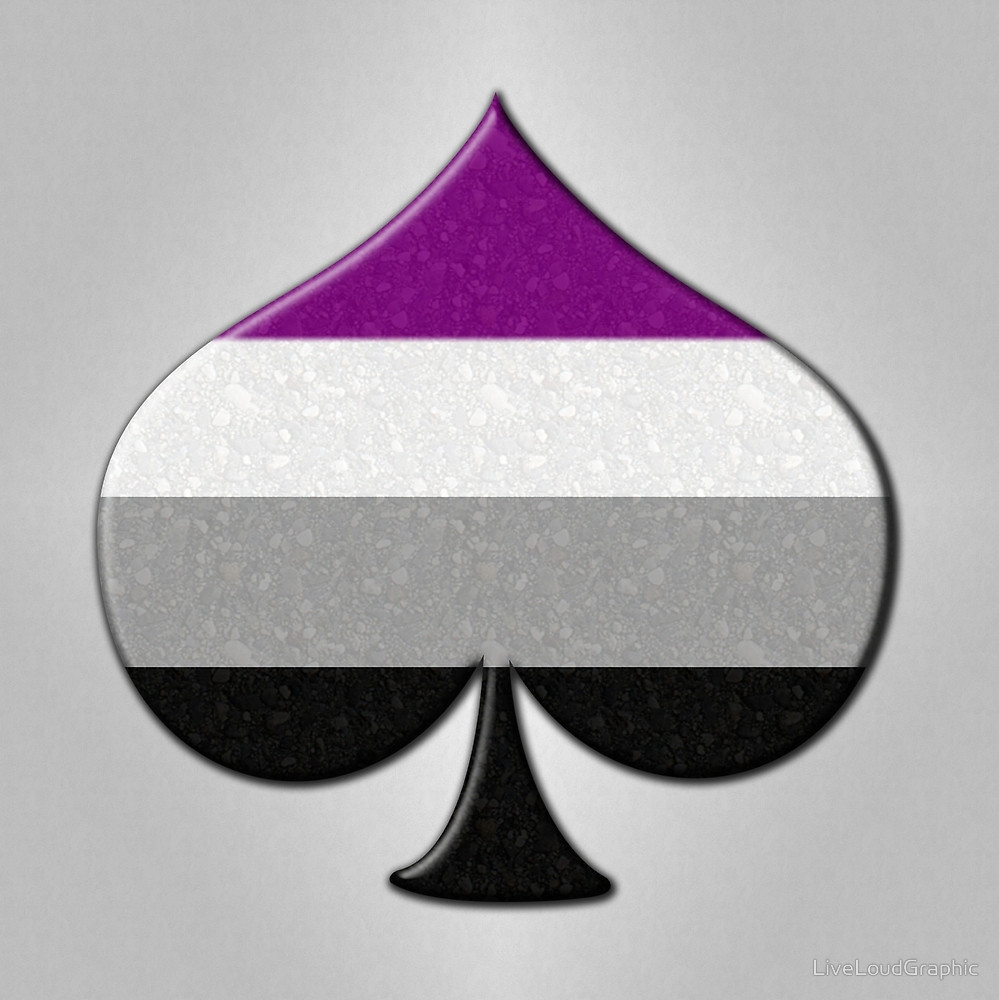
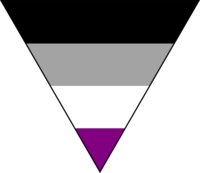 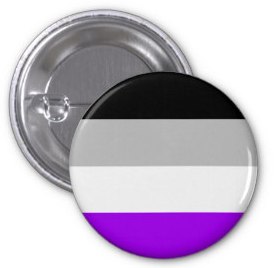
The flag that symbolizes the asexual
(ace) community uses the
colors black, grey, white and purple. The black stripe
represents asexuality. The grey stripe represents the
grey area between sexuality and asexuality. The white
stripe represents sexuality. The purple stripe
represents community.
Short History of the Rainbow Pride Flag
Wikipedia: LGBTQ Pride Symbols
Stonewall Society: Gay Symbols
Advocate: Complete Guide to Queer Pride Flags
Wikipedia: Gay Pride
HuffPost: Dozens of LGBTQ Pride Flags
Info: LGBTQ History
Symbols of the LGBTQ Movements
Gilbert Baker: Creator of the Original Rainbow Flag
Info: Rainbows
How the Nazi Pink Triangle Became a Defiant Symbol of
LGBTQ Rights
Advocate: 30 Pride Flags You Should Know
Gay Star News: Biggest
Guide to LGBTQ Rainbow Flags
Info: Pride Parades and Festivals
Wikipedia: History of Homosexuality
Introduction to LGBTQ Flags
Fun With Flags
Were You Aware of All These LGBTQ Flags?
Rainbow Dept: LGBTQ Pride Symbols
Info: Unicorn
Transgender
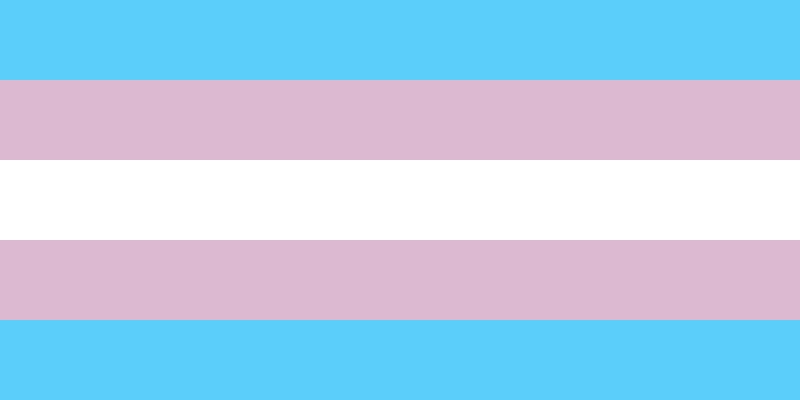
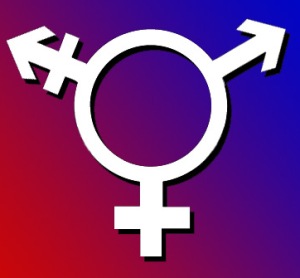 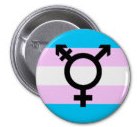
Popular symbols used to identify transgender,
transsexual, and other gender variant (or
gender queer) people frequently consist of modified
gender symbols combining elements from both the male and
female symbols. More specifically, the symbol depicts a
circle with an arrow (as per the male symbol), a cross
(as per the female symbol), and an additional striked
arrow (combining the female cross and male arrow).
|
Non-Binary
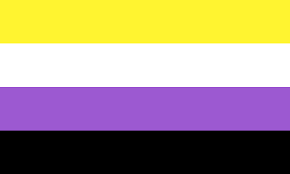
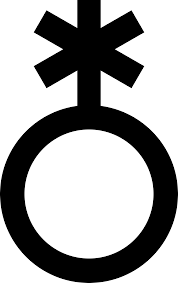
|
Genderqueer
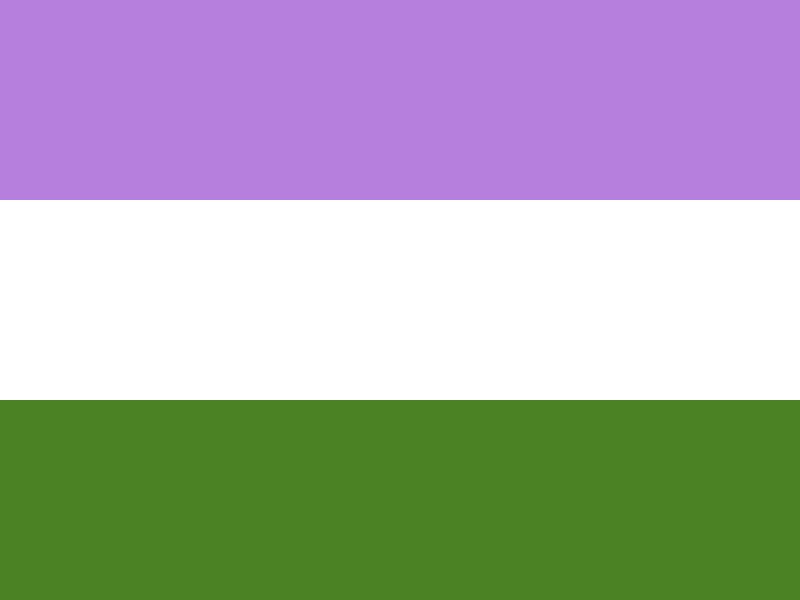

|
|
|
Agender
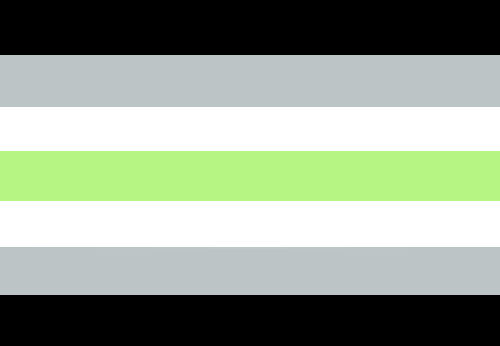


|
Gender
Fluid
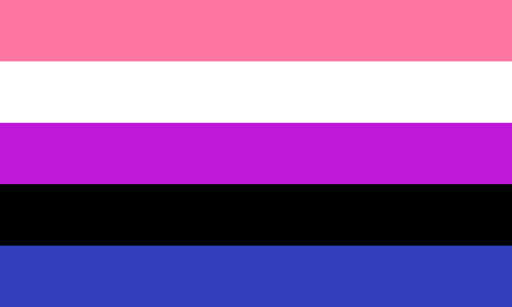
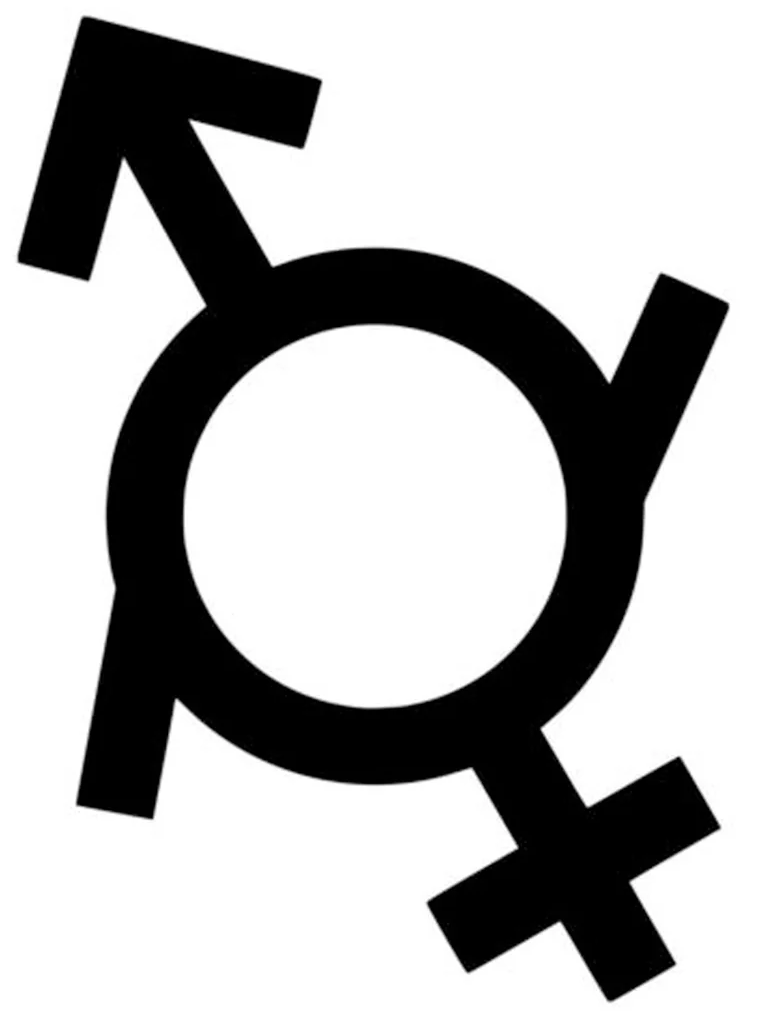  |
Androgyne


 |
Intersex
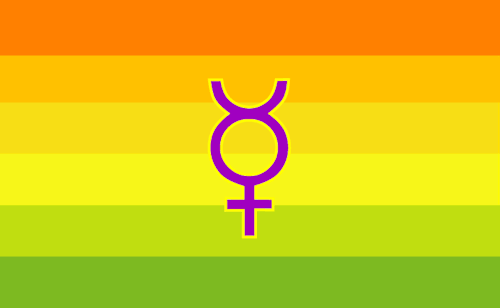
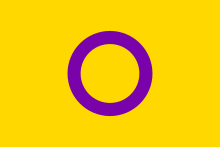
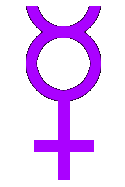
Flags
representing the intersex community might use the circle
symbol or the Mercury symbol. The purple circle (meaning
wholeness and simplicity) on the yellow field is example
of a popular intersex flag, which originated from an
Australian intersex organization. Some intersex people
have adopted the colors of the transgender flag. The
Mercury symbol is from
Greek mythology, in which Aphrodite (Venus) had a child with
Mercury (Hermes). The child was named Hermaphroditus and
possessed both male and female genitalia. Thus the
origin of the word hermaphrodite. Since Hermaphroditus
didn't have a specific symbol, the symbol for Mercury
was borrowed in this instance to represent an intersex
person. Mercury's symbol has a cross extending down to
represent femininity and a crescent moon at the top to
represent masculinity. The two are placed at opposite
ends of the circle to strike a balance between the male
and female parts.
Advocate: 30 Pride Flags You Should Know
Info: Pride Parades and Festivals
Gay Star News: Biggest
Guide to LGBTQ Rainbow Flags
Wikipedia: History of Homosexuality
Queer Pride Flags You Should Know
Short History of the Rainbow Pride Flag
Queer Code: Secret Languages of LGBTQ
How Well Do You Know Your Pride Flags?
Queer Pride Flags You Should Know
Flying with Pride: Colorful Guide to LGBTQ Flags
30 Different Pride Flags
on Display
Were You Aware of All These LGBTQ Flags?
Rainbow Dept: LGBTQ Pride Symbols
Info: Unicorn
Bears
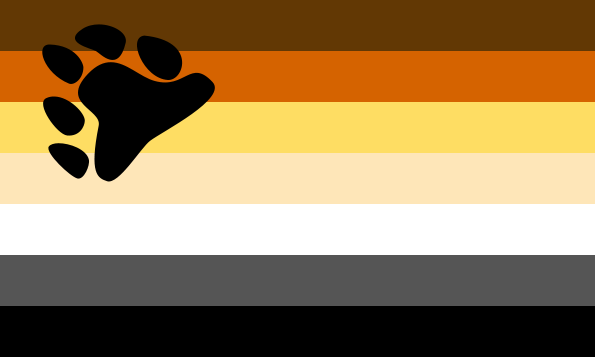
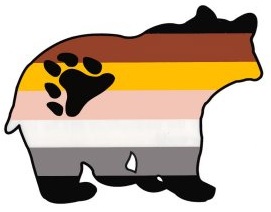 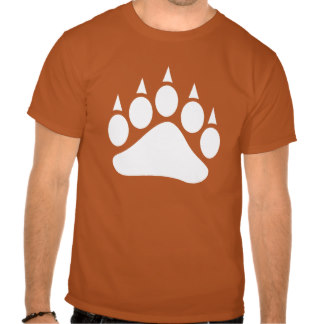 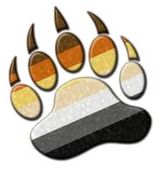
The Bear
culture or community (tribe), with its hypermasculine image and
rustic physical type, uses earthy, natural colors along
with a bear claw for its symbol of brotherhood.
BDSM
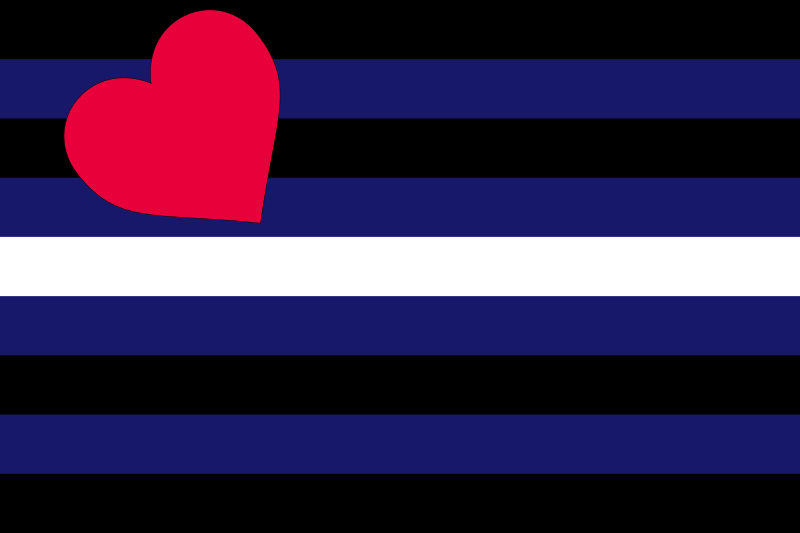
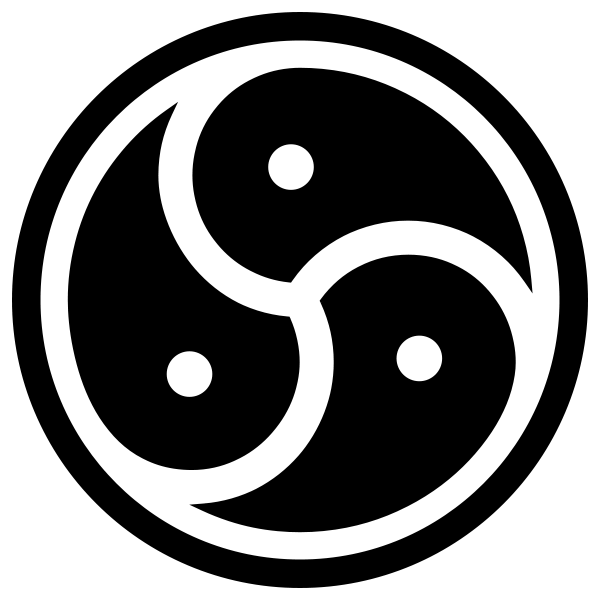
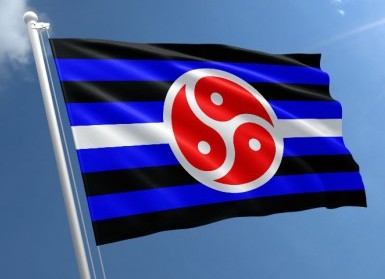
Symbols used in the BDSM
(Kink, Leather) community and fetish subculture
include the Triskelion icon and the Leather Pride flag.
Colors used in the symbols of the BDSM community are black and blue.
Drag
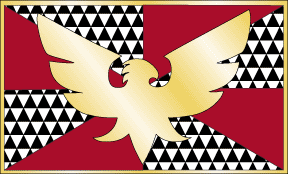
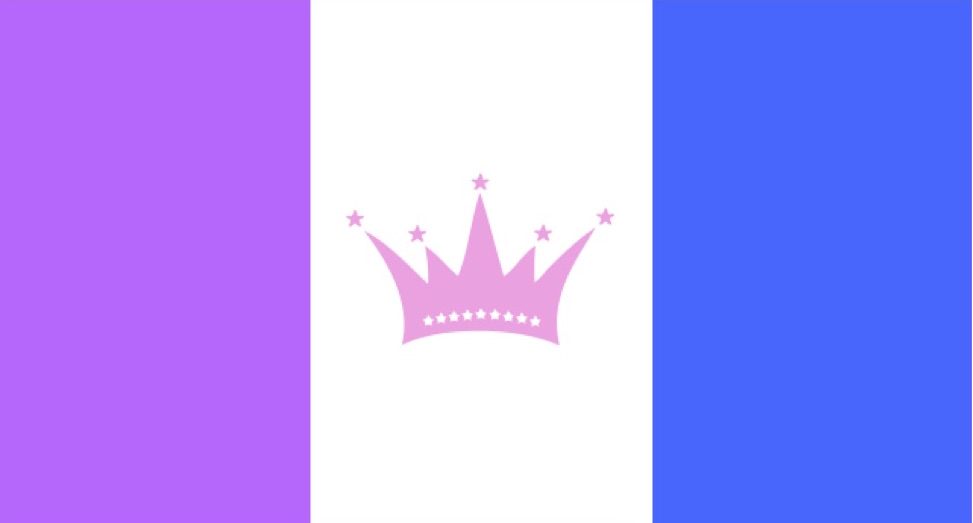
The first
Drag Pride flag was created, in 1999, by artist Sean
Campbell and was called the Feather Pride Flag. The
phoenix was used as a symbol of rebirth and fires of
passion. The newer Drag Pride flag features a crown.
These flags represent drag entertainers, drag queens,
drag kings, and crossdressers.
Polyamory
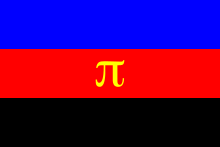
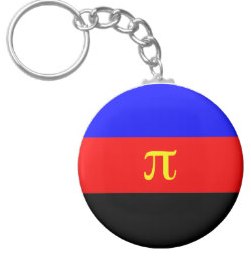
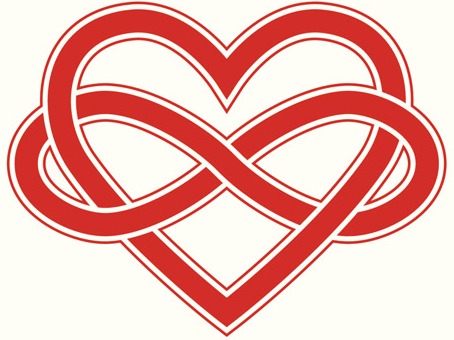
Symbols used in the Polyamory community
include the pi symbol and the eternity symbol. Colors
used in the Polyamory flag are blue, red, and black.
Gilbert Baker: Creator of the Original Rainbow Flag
Info: Rainbows
Advocate: 30 Pride Flags You Should Know
Info: Pride Parades and Festivals
Fun With Flags
Interview With Gilbert
Baker: Inventor of the Rainbow Flag
Wikipedia: History of Homosexuality
Were You Aware of All These LGBTQ Flags?
Rainbow Dept: LGBTQ Pride Symbols
Info: Unicorn
Safe Zone
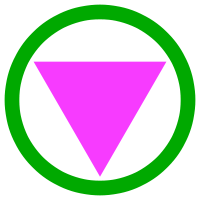 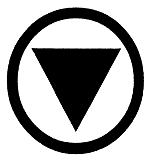 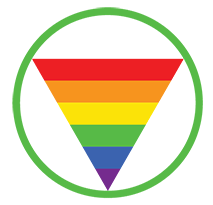 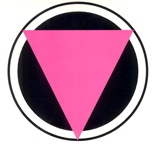 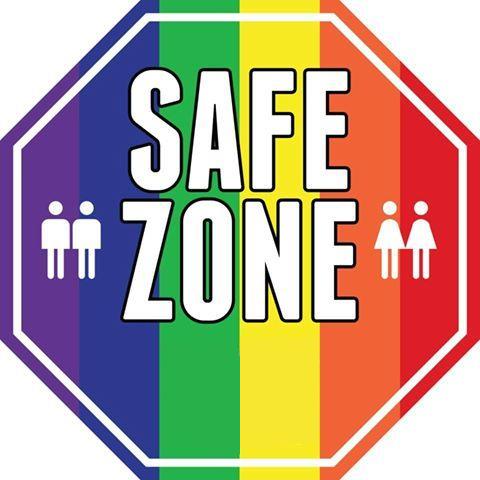
While many safe zone programs on various college and
high school campuses have individually unique logos to
represent their particular program, the circle design
has come to represent the universal safe zone symbol.
The green circle (sometimes a symbol for LGBTQ allies)
represents safety or protection. The inverted pink
triangle represents the LGBTQ community. Together they
depict protection for LGBTQ people. Sometimes stop signs
are a part of many safe zone placards (suggesting "stop
hate" or "stop bullying").
Straight Ally
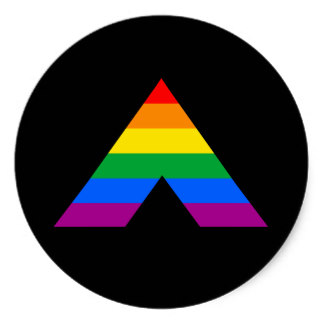
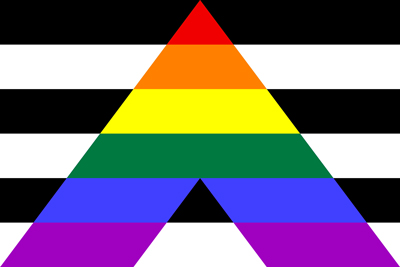
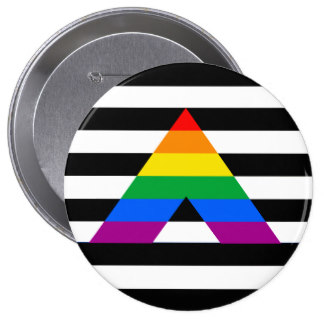
The black and white stripes in the background (field)
represent straight (heterosexual) people. A large
rainbow colored "A" (for Ally) is added in the
foreground to indicate straight support for LGBTQ
people, issues, and concerns.
Wikipedia: LGBTQ Pride Symbols
How Well Do You Know Your Pride Flags?
Queer Code: Secret Languages of LGBTQ
Stonewall Society: Gay Symbols
Advocate: Complete Guide to Queer Pride Flags
Wikipedia: Gay Pride
30 Different Pride Flags
on Display
Info: LGBTQ History
How the Nazi Pink Triangle Became a Defiant Symbol of
LGBTQ Rights
Symbols of the LGBTQ Movements
Flying with Pride: Colorful Guide to LGBTQ Flags
Gilbert Baker: Creator of the Original Rainbow Flag
Info: Rainbows
Advocate: 30 Pride Flags You Should Know
Info: Pride Parades and Festivals
Wikipedia: History of Homosexuality
Fun With Flags
Introduction to LGBTQ Flags
Gay Star News: Biggest
Guide to LGBTQ Rainbow Flags
Were You Aware of All These LGBTQ Flags?
Rainbow Dept: LGBTQ Pride Symbols
Info: Unicorn
HOME
QUEER CAFE
│ LGBTQ Information Network │ Established 2017 |